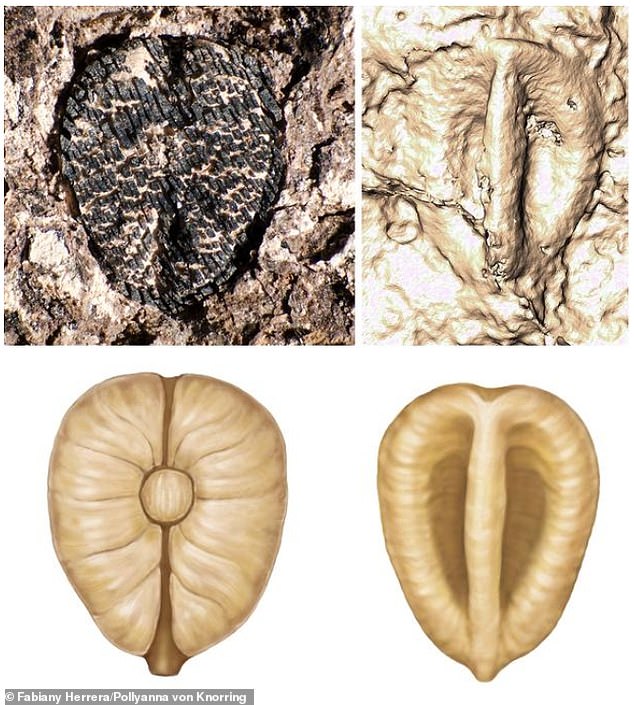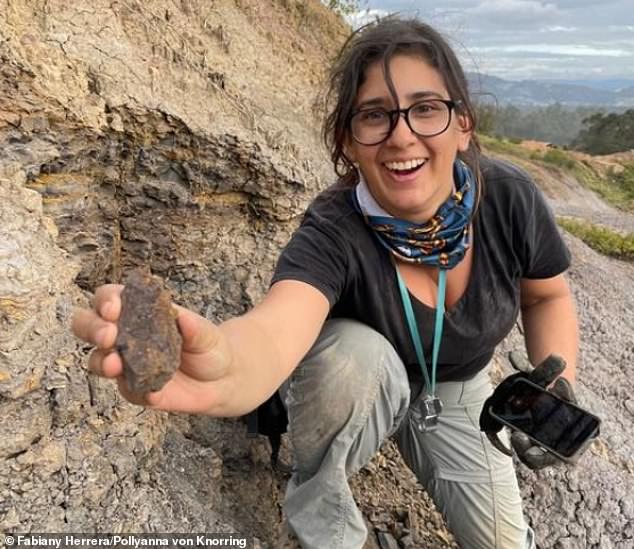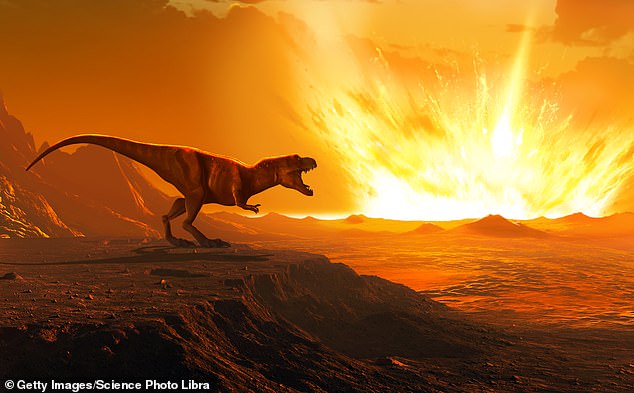- Without dinosaurs to trample the trees, vine plants like grapes flourished
- READ MORE: An asteroid wiped out the dinosaurs 66 million years ago
Next time you open a bottle of wine, it might be worth raising a glass to the dinosaurs.
That’s because their extinction, caused by a huge asteroid, paved the way for the spread of grapes, a new study suggests.
Research indicates that the disappearance of prehistoric reptiles allowed more trees to grow, which in turn meant vines could flourish.
A team from Chicago’s Field Museum has discovered fossil grape seeds dating back between 60 and 19 million years in Colombia, Panama and Peru.
One of these species represents the oldest known example of plants in the grape family in the Western Hemisphere, and the seeds help show how the grape family evolved.
It is now well known that the dinosaurs were wiped out by the Chicxulub impact, an asteroid or comet that plummeted into a shallow sea in what is now the Yucatan Peninsula in Mexico some 66 million years ago (file photo)
About 66 million years ago, an asteroid larger than Mount Everest slammed into Earth, wiping out three-quarters of all life on the planet, including the dinosaurs.
The consequences allowed small mammals and some birds to thrive and laid the foundation for grapes to flourish.
Fabiany Herrera, lead author of the study, said: “These are the oldest grapes ever found in this part of the world, and they are a few million years younger than the oldest ever found on the other side of the planet.
‘This discovery is important because it shows that after the extinction of the dinosaurs, grapes really began to spread around the world.’

Colombia’s Lithouva fossil grape is the oldest in the Western Hemisphere, at about 60 million years old. The figure above shows the fossil accompanied by a CT reconstruction. The figure below shows the reconstruction made by an artist.
Researchers said it is no coincidence that grapes first appeared in the fossil record around the same time the Chicxulub asteroid hit Earth.
They suggest that the disappearance of dinosaurs could have contributed to altering forests, because large species probably felled trees as they roamed.
Without large dinosaurs to prune them, forests filled with layers of trees, allowing plants like grapes to climb them.
The diversification of birds and mammals in the years after the mass extinction may also have helped grapes by spreading their seeds, the researchers said.

Monica Carvalho, co-author of the article, holds the fossil of the oldest grape seed found in the Western Hemisphere
“We always think about the animals, the dinosaurs, because they were the most affected, but the extinction also had a huge impact on the plants,” said Dr. Herrera.
‘The forest was reset, in a way that changed the composition of the plants.
“In the fossil record, we started to see more plants that used vines to climb trees, like grapes, around this time.”
The findings were published in the journal. Plants of nature.


